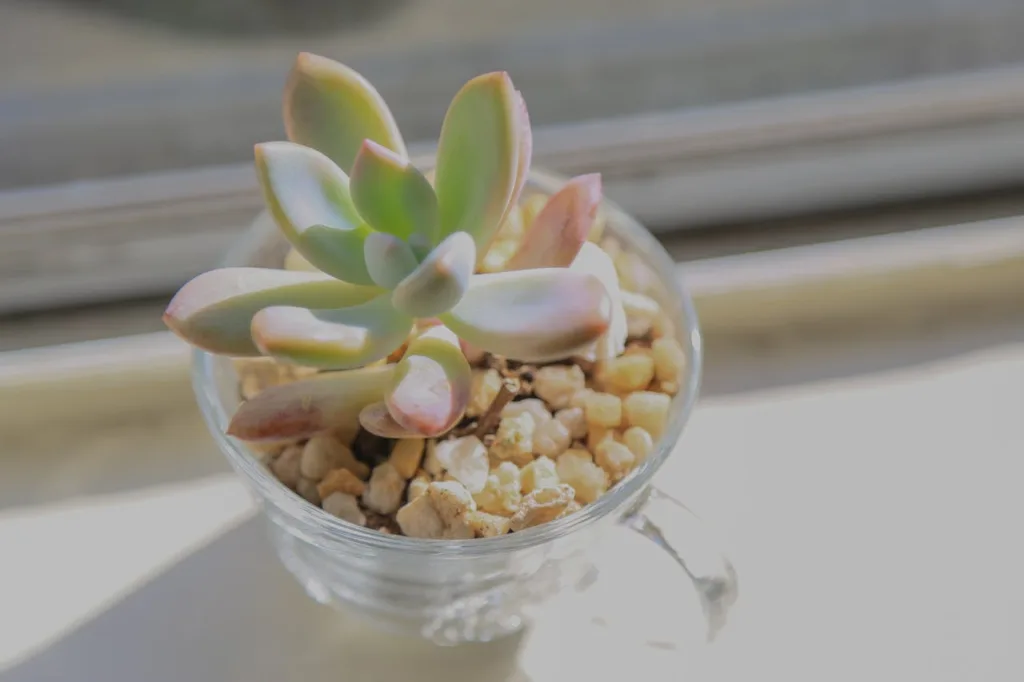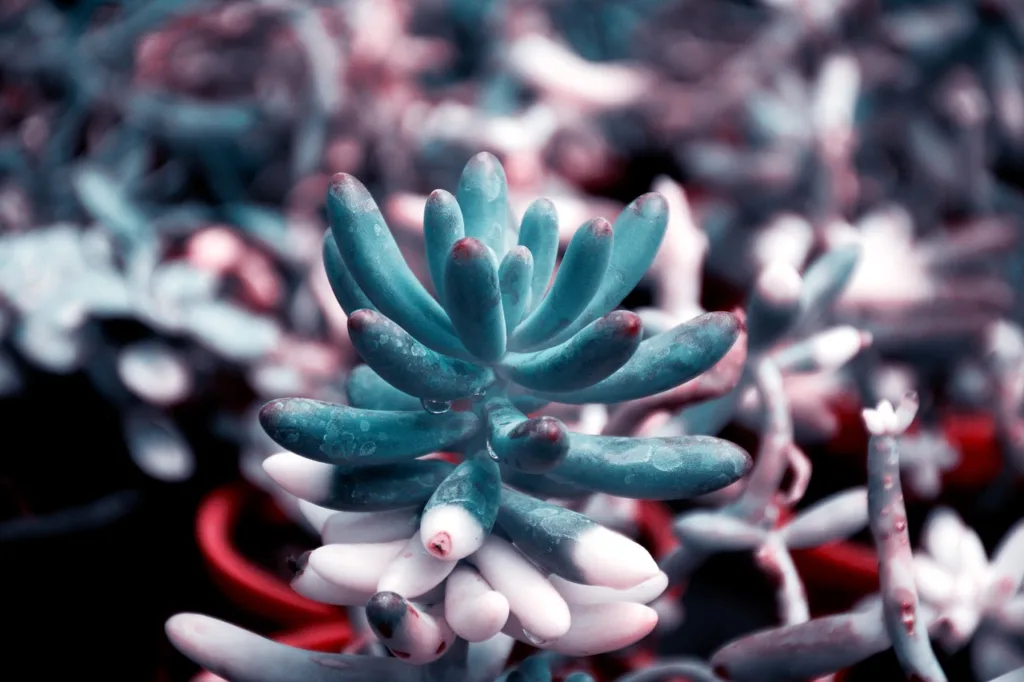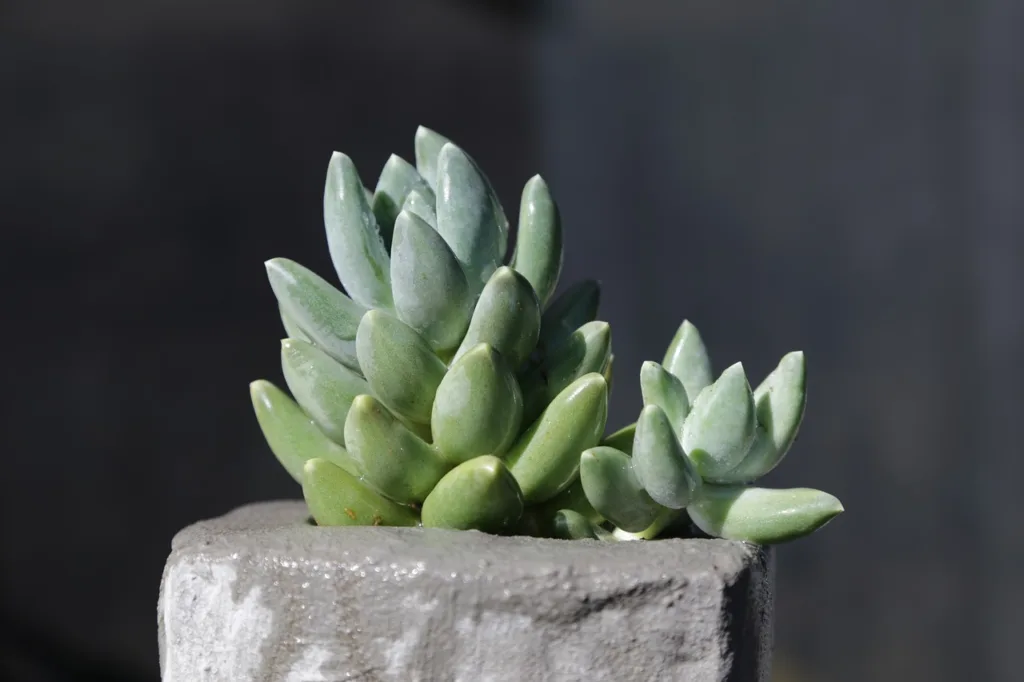Succulents are becoming increasingly popular due to their distinctive appearance and low maintenance requirements. Pachyphytum, a succulent genus with rosette-shaped leaves and bright colors, is a favorite among plant enthusiasts.
Whether you’re interested in adding these charming plants to your collection or seeking advice on how to care for them, you’ve come to the right place.
In this comprehensive guide, we’ll explore the world of Pachyphytum succulents, including how to grow and nurture them to ensure they thrive in your care.
What is Pachyphytum Succulents
Pachyphytum succulents belong to the Crassulaceae family and are native to Mexico. They are characterized by their fleshy, rounded leaves that form tight rosettes, creating a visually appealing display.
These plants come in various colors, ranging from green to shades of purple, pink, and blue. Pachyphytum succulents make excellent additions to indoor and outdoor gardens, adding a touch of elegance to any space.
Choosing the Right Pachyphytum Variety
When selecting Pachyphytum succulents for your collection, consider the following popular varieties:
- Pachyphytum oviferum: Also known as Moonstones, this variety features round, silvery leaves that resemble moonstones.
- Pachyphytum compactum: This variety is a favorite among succulent enthusiasts with its compact rosettes and greenish-blue leaves.
- Pachyphytum bracteosum: Known for its pinkish-gray leaves and unique growth habits, this variety adds a touch of color to your succulent garden.
Choose a variety that resonates with your aesthetic preferences and ensure it aligns with the growing conditions available in your environment.

Growing Pachyphytum Succulents
Light Requirements
Pachyphytum succulents thrive in bright, indirect light. Place your plants near a south-facing window where they can receive ample sunlight throughout the day. If you’re growing them outdoors, ensure they are exposed to filtered sunlight to prevent sunburn on their delicate leaves.
Soil and Potting
Use a well-draining soil mix that allows excess water to flow out easily. A mixture of succulent potting mix and perlite or sand works well for Pachyphytum succulents. Choose a pot with drainage holes to prevent waterlogging, which can lead to root rot.
Watering
Succulents are drought-tolerant plants, so be cautious not to overwater your Pachyphytum. Water your plants only when the top inch of soil is dry to the touch. During the growing season, typically spring and summer, water more frequently, reducing the frequency during the dormant winter months.
Temperature and Humidity
Pachyphytum succulents thrive in moderate temperatures ranging from 65°F to 75°F (18°C to 24°C). They can tolerate higher temperatures but should be protected from extreme heat. Maintain a humidity level of around 40%-50% to prevent moisture-related issues.
Fertilization
During the growing season, feed your Pachyphytum succulents with a diluted succulent fertilizer every 2-4 weeks. Avoid fertilizing during the dormant winter period to allow the plants to rest.
Caring for Pachyphytum Succulents
Pruning and Maintenance
Remove any dead or dried leaves from the base of the plant to promote healthy growth. Regularly check for pests such as mealybugs or spider mites, especially in the tight crevices of the rosettes.
Propagation
Pachyphytum succulents can be propagated easily through leaf cuttings or offsets. Gently remove a healthy leaf or offset and allow it to dry for a few days before planting it in well-draining soil. Keep the soil slightly moist until new roots and growth appear.
Repotting
Repot your Pachyphytum succulents every 2-3 years to refresh the soil and provide more space for growth. Choose a slightly larger pot and ensure the plant is well-centered before adding new soil around the roots.
Seasonal Care
During the winter months, when Pachyphytum succulents enter their dormant phase, reduce watering frequency to prevent root rot. Place them in a cooler location with reduced sunlight to mimic their natural growth cycle.

Conclusion
Growing and caring for Pachyphytum succulents can be a rewarding experience, allowing you to enjoy the beauty of these unique plants in your home or garden.
By providing the right growing conditions, proper care, and attention to detail, you can ensure that your Pachyphytum succulents thrive and continue to delight you with their striking appearance.
Incorporate these tips into your plant care routine to create a flourishing environment for your Pachyphytum succulents and watch them flourish in your care. Happy growing!
FAQs
Is Pachyphytum an indoor plant?
- Pachyphytum plants are often grown indoors as houseplants, particularly in regions where outdoor cultivation is not feasible due to climate conditions. They thrive in well-draining soil and bright, indirect sunlight.
What is another name for Pachyphytum?
- Pachyphytum is commonly known as “Moonstones” due to the shape and color of its leaves, which resemble moonstones or pearls.
Is Pachyphytum oviferum poisonous?
- Pachyphytum oviferum, commonly known as “Moonstones,” is generally not considered toxic to humans or pets. However, as with any plant, ingestion may cause mild stomach upset. It’s always best to keep plants out of reach of children and pets as a precaution.

